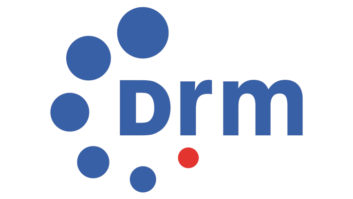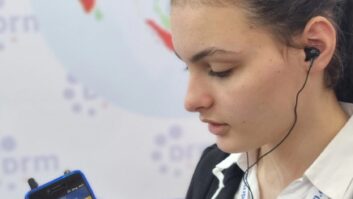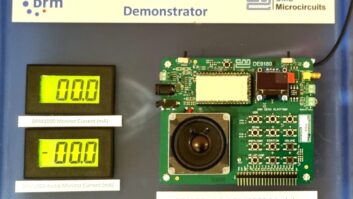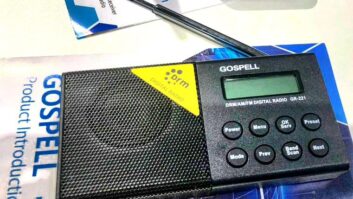WASHINGTON Dr. Donald Messer has retired from the International Broadcasting Bureau to work full-time with the Digital Radio Mondiale Consortium, an organization of broadcasters and manufacturers in several countries that promotes a technology to migrate shortwave, medium-wave/AM and now FM to digital.
The IBB intends to fill Messer’s position and continue to participate in the DRM Consortium and the ITU.
The bureau provides engineering and administrative support for U.S. government-funded, non-military international broadcast services such as Voice of America and Radio Martí. Formed in 1994, it formerly was part of the U.S. Information Agency. IBB and its governing body, the Broadcasting Board of Governors, were established as independent federal government entities when USIA was disbanded in 1999.
Full-time digital
Messer’s move expands what has been a part-time endeavor among his IBB duties to a full-time role with compensation. He remains chairman of the consortium’s Technical Committee and a member of the steering board and strategic planning group.
Messer has also been the test coordinator for any country wants to evaluate DRM.
DRM has test agreements with Mexico and Brazil. Tests in Mexico were to be completed in July, he said, with the 26 MHz results to be submitted to the consortium by September, to be followed later in the year for the medium-wave/AM results.
“The Brazil work should start this fall, but the test plan schedule is not yet fixed,” said Messer. “We have also received inquiries about testing of this sort from other countries. Along these lines, tests continue in Russia and China, as well as in many countries in Europe and in Kuwait.”
Additional countries represented by DRM members include Italy, Germany, France, Sweden, Spain, Japan, Canada and the United Kingdom.
On this continent, Messer has scaled back his role with the National Radio Systems Committee. He has resigned as co-chairman of the DAB Subcommittee’s standardization working group, to avoid the appearance of a conflict of interest in his DRM role.
Sony’s Paul Feinberg remains co-chairman of this group; Dom Bordonaro, chief engineer for Cox Radio in Connecticut, is the new co-chair.
“This group still has a lot of work to do, Advanced Data Applications being the most important one,” said Messer, who added he will continue to attend meetings as an observer.
Aerospace and government
Messer had been with IBB for 20 years. He left IBB in May as director of the Spectrum Management Division.
He held a variety of engineering positions earlier in his career. After graduating from New York University with a Bachelor of Science in engineering physics in 1952, Messer went on to get his Master of Science from Cornell in theoretical solid-state physics and a doctorate from Johns Hopkins in operations research.
He spent several years in the aerospace industry in advanced development and applied research. In 1971-81 he was president of Messer Associates, a technical and management consulting firm later acquired by Dynamac.
In his IBB role, he was the Broadcast Satellite Program manager at the USIA’s Voice of America. There, he helped lead to fruition what is now called satellite digital radio, according to a 1996 FCC filing by Messer and others evaluating pioneer preferences.
In the late 1960s, some U.S. and European broadcast groups began analytic work for would become communications satellites capable of transmitting audio programs to fixed, portable and mobile receivers. The European Broadcast Union, Voice of America and NASA conducted this early work, which increased in the 1970s and ’80s with the development of more powerful satellite transponders.
In 1988, the U.S. government became interested in satellite radio for diplomacy purposes and directed the National Security Council to look into it. It did so, and the government directed delegates to the World Administrative Radio Conference to begin working towards frequency allocation for satellite digital radio.
In 1990-91, VOA, under Messer’s guidance, and NASA funded and directed the Jet Propulsion Lab on a series of tests, including a demonstration in Washington with what was the forerunner of a transmit/receive system for use with either L-band or S-band spectrum.
Messer was a key U.S. delegate at the 1992 WARC that led to the S-band allocation for satellite digital radio in this country and L-band overseas for testing a satellite component with the Eureka-147 DAB system. In 1990, the FCC received its first application for satellite digital radio from Satellite CD Radio.
In 1996, he was one of the experts the FCC called to review spectrum applications for the original satellite applicants, to determine whether they qualified for a “pioneer’s preference” for spectrum. The experts said no.
The applicants for the spectrum were Primosphere; DSBC; Satellite CD Radio, which became Sirius Satellite Radio; and American Mobile Radio Corp., which became XM Satellite Radio. Eventually two licenses went to the highest bidders at auction.
Around 1996, Messer recalled, the NRSC tested the VOA/JPL experimental satellite system, and he had the idea to apply the techniques to shortwave broadcasting.
“We did some work on this, and during that time I got involved with what has evolved into DRM.” He became the chairman of the DRM Technical Committee in 2000.












